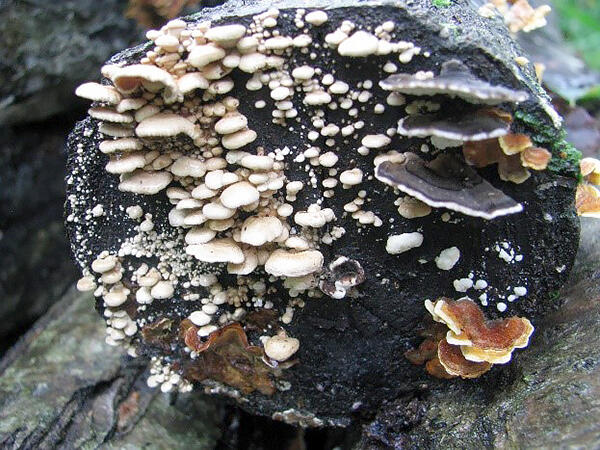A research group led by Assistant Professor Yu Fukasawa, Graduate School of Agriculture, Tohoku University, manipulated the number of fungal species inoculated on wood chips and investigated the relationship between the number of fungal species and the decomposition rate. The results showed that the higher the number of fungal species coexisting on the chips, the lower their decomposition rate. Forest ecosystems absorb atmospheric carbon dioxide through photosynthesis in plants. However, in contrast to this, the decomposition of dead trees causes the release of carbon dioxide. Reducing this rate of decomposition leads to a reduction in the amount of carbon dioxide released into the atmosphere.

Credit: Tohoku University
Fungi are organisms that play a major role in the decomposition of dead trees. However, the relationship between coexisting fungal diversity and decomposition rate is not well understood. The research group investigated the relationship between the number of fungal species and the decomposition rate of sawdust by manipulating the number of fungal species inoculated into and cultured in tea bags packed with red pine sawdust. After culturing the fungi for 6 months, it was revealed that there was a negative correlation between the number of fungal species and sawdust decomposition. This was seemingly different from the known positive correlation between species richness and biomass production in plants. However, both findings suggest that higher species richness may promote carbon retention in forests. Furthermore, the negative relationship between the number of species and decomposition rate was more pronounced in the group of highly competitive fungi found in the latter stages of decomposition of dead trees than in the group of relatively less competitive fungi observed in the early stage of the decomposition process.
According to Assistant Professor Fukasawa, "In essence, we found that the greater the number of fungal species communities involved in the decomposition of wood, the lower the rate of decomposition of that wood. This result suggests the importance of conserving fungal diversity, especially dead trees and fungal communities, during the late stage of decomposition process in relation to the promotion of carbon sequestration in forests."
This article has been translated by JST with permission from The Science News Ltd.(https://sci-news.co.jp/). Unauthorized reproduction of the article and photographs is prohibited.




